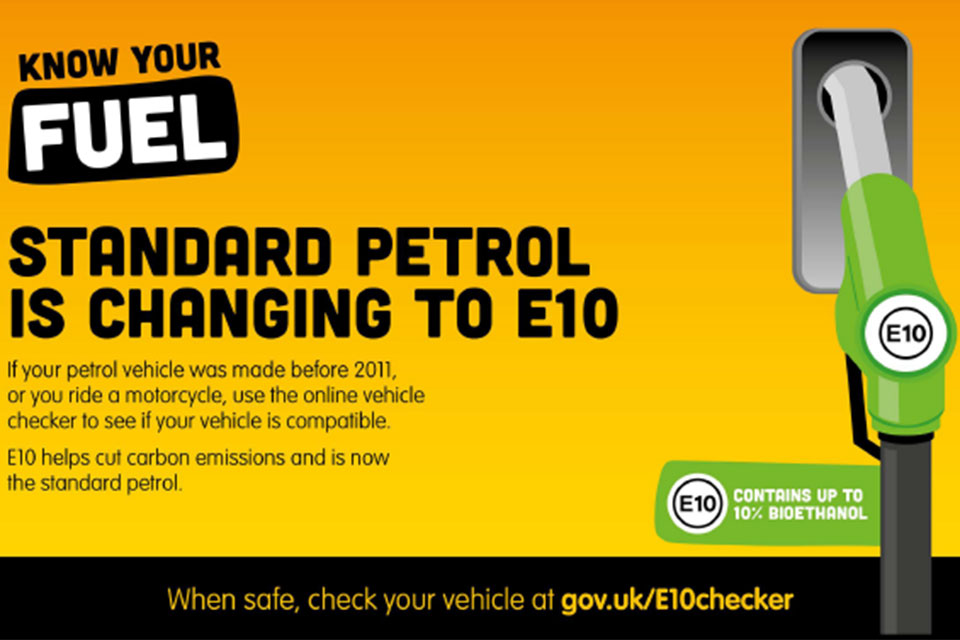

During summer 2021, the standard (95 octane) petrol grade in Great Britain will become E10. In About E10 petrol
Almost all (95%) petrol-powered vehicles on the road today can use E10 petrol and all cars built since 2011 are compatible.
If your petrol vehicle or equipment is not compatible with E10 fuel, you will still be able to use E5 by purchasing the ‘super’ grade (97+ octane) petrol from most filling stations.
Petrol pumps will clearly label petrol as either E10 or E5.

Check your vehicle is compatible with E10 petrol
You can check if your car, motorbike or moped can use E10 petrol by using the E10 vehicle checker.
About E10 petrol
E10 petrol contains up to 10% renewable ethanol, which will help to reduce carbon dioxide (CO2) emissions associated with petrol vehicles and tackle climate change. Petrol in the UK currently contains up to 5% renewable ethanol (known as E5).
E10 petrol is already widely used around the world, including across Europe, the US and Australia. It has also been the reference fuel against which new cars are tested for emissions and performance since 2016.
Reducing emissions
CO2 is one of the greenhouse gases that contribute to climate change and the main benefit of E10 petrol is that it reduces overall levels of CO2-based vehicle emissions.
By blending petrol with up to 10% renewable ethanol, less fossil fuel is needed, helping us reduce carbon emissions and meet climate change targets.
The introduction of E10 petrol at UK forecourts could cut transport CO2 emissions by 750,000 tonnes a year – the equivalent of taking 350,000 cars off the road, or all the cars in North Yorkshire.
Renewable fuel blends, such as E10 petrol, are generally introduced to reduce overall CO2 emissions. They have little impact on emissions associated with air quality and public health.
The production of renewable ethanol for blending with fossil petrol also results in valuable by-products, including animal feed and stored CO2.
Fuel economy
Using E10 petrol can slightly reduce fuel economy (the number of miles you are able to drive on a gallon of fuel). You may see a reduction of around 1%, but it is unlikely to be noticeable in everyday driving.
Other factors – such as your driving style or driving with under-inflated tyres or a roof rack – have a much more significant impact on fuel economy than using E10 petrol.
Compatibility
Vehicles
Around 95% of petrol-powered vehicles on the road are compatible with E10 petrol and this figure is increasing all the time.
All new cars manufactured since 2011 are compatible with E10 petrol, and most cars and motorcycles manufactured since the late 1990s are also approved by manufacturers to use E10.
The following vehicles, however, may not be compatible with E10 petrol:
classic, cherished and older vehicles
some specific models, particularly those from the early 2000s
some mopeds, particularly those with an engine size of 50cc or under
Contact your local dealer for more information